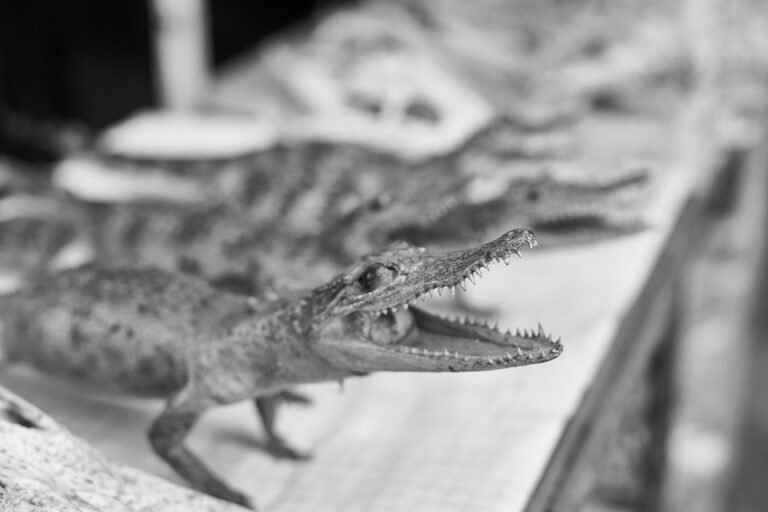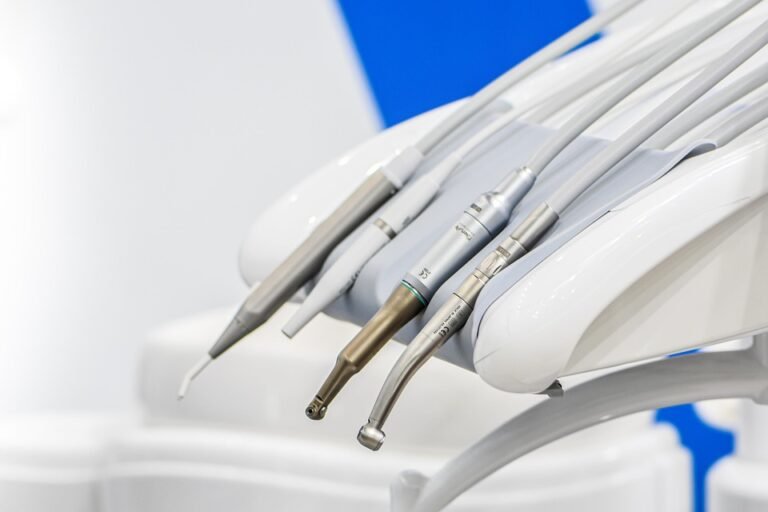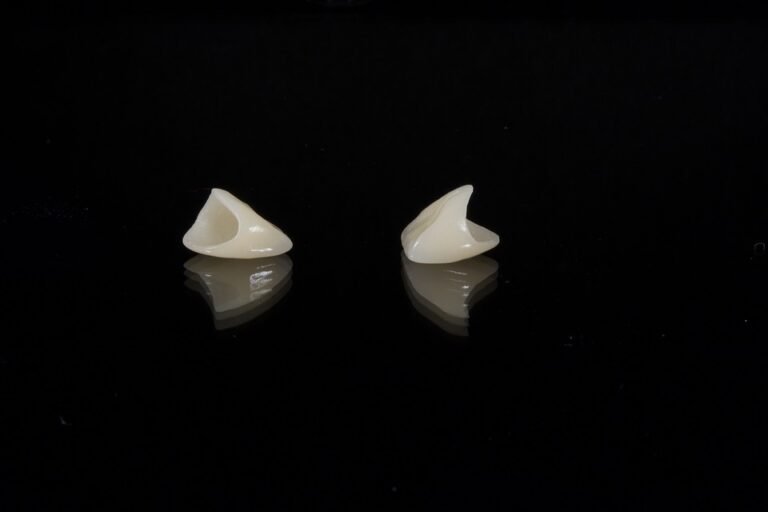How does bio-inspired design improve the aesthetics of dental materials
Okay, so I’m a dental student and we’re learning about different materials for fillings, crowns, veneers, all that stuff. I understand the importance of mechanical properties and biocompatibility, but I’m really interested in how we can make things look more natural. I keep hearing about "bio-inspired design" but I don’t quite grasp how it actually translates into better looking teeth replacements.
Specifically, can someone explain with examples:
-
How does mimicking natural tooth structures at a micro or nano level (like enamel rods or dentin tubules) influence the light reflection and translucency of composite resins or ceramics? Does that explain why some modern materials look so much more realistic than older ones?
-
Are there examples of bio-inspired designs that improve the blending of dental materials with the surrounding teeth? I’m thinking about things like surface textures or gradient color layering that could be inspired by how natural teeth are structured.
- Beyond just appearance, does bio-inspiration ever lead to better long-term aesthetic outcomes? For example, could a design inspired by the way teeth wear naturally actually resist discoloration or chipping better over time, leading to a longer-lasting aesthetically pleasing restoration?
I’m looking for more than just vague definitions, I want to understand the mechanisms and see some concrete examples of materials that use bio-inspired design to achieve improved aesthetics. I want to really get it. Thanks!
Answer
Bio-inspired design leverages principles and structures found in nature to improve the aesthetics of dental materials in several ways. It moves beyond simply mimicking the color of teeth and delves into replicating the complex structural and optical properties that give natural teeth their lifelike appearance. Here’s a breakdown of how bio-inspired design enhances the aesthetics of dental materials:
1. Mimicking Enamel Microstructure:
- Natural Enamel’s Complexity: Natural enamel isn’t a uniform, monolithic substance. It’s composed of highly organized prisms (or rods) of hydroxyapatite crystals arranged in complex patterns. These prisms are not perfectly parallel; they interweave and change direction within the enamel layer. This complex arrangement is crucial for both strength and optical properties.
- Replicating Prism Orientation: Bio-inspired materials attempt to replicate this complex prism arrangement. For example, researchers are exploring techniques to create dental composites or ceramics with oriented crystalline structures similar to natural enamel. This involves controlling the growth and alignment of the crystals during the material’s fabrication.
- Improved Light Scattering and Reflection: The varying orientation of prisms in natural enamel causes light to scatter and reflect in a complex manner. This contributes to the tooth’s translucency, opalescence, and subtle variations in color. By mimicking this structure, bio-inspired materials can achieve more natural light interaction, reducing the artificial, opaque look often associated with traditional dental restorations.
- Result: The dental material exhibits a more natural vitality and depth of color, making it blend seamlessly with the surrounding dentition.
2. Replicating the Dentinoenamel Junction (DEJ):
- The DEJ’s Significance: The dentinoenamel junction (DEJ) is the interface between enamel and dentin. It’s a complex, scalloped or interlocked structure that serves multiple purposes: stress distribution, preventing crack propagation, and influencing optical properties. The DEJ also contributes to the tooth’s overall color and translucency.
- Introducing a Gradient Interface: Bio-inspired approaches aim to recreate a gradient interface between the restorative material and the tooth structure, mimicking the DEJ. This can involve using materials with varying refractive indices to gradually transition from the optical properties of the restoration to those of the underlying dentin.
- Improved Optical Integration: By replicating the DEJ’s gradient, light can pass more smoothly between the restoration and the tooth, reducing the appearance of a distinct boundary line. This is especially important in anterior restorations where aesthetics are paramount.
- Result: A more natural-looking restoration with improved blending and reduced visibility of the restoration margin.
3. Opalescence and Fluorescence:
- Natural Tooth Properties: Natural teeth exhibit opalescence (a bluish hue when viewed under reflected light and an amber hue when viewed under transmitted light) and fluorescence (the emission of light when exposed to ultraviolet radiation). These properties contribute significantly to the vitality and natural appearance of teeth, especially under different lighting conditions.
- Incorporating Opalescent and Fluorescent Agents: Bio-inspired materials incorporate nano-sized particles or specific chemical compounds to mimic opalescence and fluorescence. For example, adding specific pigments or nanoparticles that scatter light in a wavelength-dependent manner can replicate the opalescent effect. Similarly, fluorescent agents can be incorporated to make the restoration glow slightly under UV light, just like natural teeth.
- Dynamic Appearance: The resulting materials exhibit a more dynamic appearance that changes with the lighting environment, further enhancing their aesthetic realism.
- Result: Restorations appear more lifelike and less artificial under varying lighting conditions, including natural sunlight and artificial lighting.
4. Layering Techniques Inspired by Natural Tooth Structure:
- Enamel and Dentin Layers: Natural teeth have distinct layers of enamel and dentin, each with different optical properties (color, translucency, opacity). Dentin is generally more opaque and yellow/brownish, while enamel is more translucent and bluish/grayish.
- Multi-Layered Restorations: Bio-inspired dentistry utilizes layering techniques to mimic this natural structure. This involves applying layers of different materials with varying translucency, opacity, and color to recreate the depth and complexity of a natural tooth.
- Controlled Material Placement: Careful control over the thickness and placement of each layer is essential to achieve a natural aesthetic outcome. For example, a more opaque dentin shade is placed internally, followed by more translucent enamel shades on the surface.
- Result: A highly realistic restoration with the appearance of depth, varying translucency, and natural color gradients.
5. Surface Texture and Morphology:
- Natural Surface Features: The surface of a natural tooth isn’t perfectly smooth. It has subtle micro-textures, such as perikymata (horizontal ridges) and enamel rods that create a slightly rough surface. These surface features contribute to light scattering and reflection, influencing the tooth’s overall appearance.
- Replicating Surface Texture: Bio-inspired design aims to replicate these natural surface features using various techniques, such as micro-abrasion, polishing with specific instruments, or even creating molds from natural teeth to replicate the surface topography.
- Improved Light Diffusion: A slightly rough surface diffuses light more effectively than a perfectly smooth surface, preventing harsh reflections and creating a more natural appearance.
- Result: Restorations exhibit a more natural light interaction and blend seamlessly with the adjacent teeth.
6. Biomimetic Mineralization:
- Natural Enamel Formation: Enamel is formed through a complex biological process called biomineralization, where ameloblasts (enamel-forming cells) deposit and organize hydroxyapatite crystals.
- Mimicking Mineralization: Bio-inspired approaches are exploring techniques to mimic this biomineralization process in vitro (outside the body). This involves using self-assembling peptides or other biomolecules to guide the deposition of hydroxyapatite crystals onto a prepared tooth surface or restorative material.
- Regenerative Potential: This approach has the potential to not only repair damaged enamel but also to create restorative materials with a highly organized, enamel-like microstructure.
- Result: A strong, aesthetically pleasing restoration that integrates seamlessly with the natural tooth structure and has the potential for long-term stability.
In conclusion, bio-inspired design improves the aesthetics of dental materials by moving beyond simple color matching and replicating the complex structural, optical, and surface properties of natural teeth. By mimicking enamel prism arrangement, the DEJ, opalescence, fluorescence, layering techniques, surface texture, and even the process of biomineralization, bio-inspired materials can achieve a level of aesthetic realism that is difficult to achieve with traditional dental materials. This leads to more natural-looking, lifelike restorations that seamlessly blend with the surrounding dentition and improve patient satisfaction.



